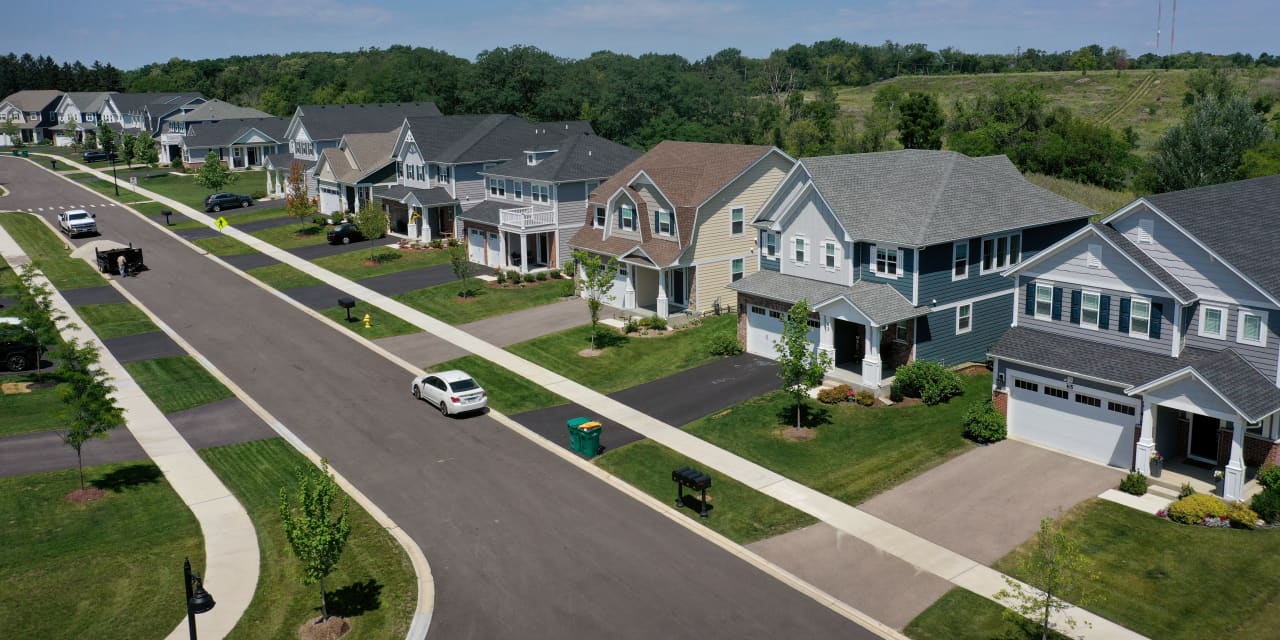Mortgage rates rose for the fourth straight week to a level just below 7%. Their next move could be lower, and that could give a boost to home buyers.
The average 30-year fixed mortgage rate was 6.94% as of Thursday, according to
Freddie Mac’s
weekly reading. It was the highest rate since mid-December.
“Mortgage rates continued their ascent this week, reaching a two-month high and flirting with 7% yet again,” Sam Khater, Freddie Mac’s chief economist, said in a statement. The jump in rates “has dampened already tentative homebuyer momentum,” he added.
Hotter-than-expected economic data set off the recent streak of mortgage rate gains. Consumer prices in January rose more than expected, sending Treasury yields—and, by extension, mortgage rates—higher.
There’s more economic data coming, which could change mortgage rates’ trajectory. If upcoming jobs data or consumer prices for February come in cooler than expected, mortgage rates could fall. If they beat expectations, mortgage rates could rise.
The most immediate move for mortgage rates could be slightly lower. The 10-year yield dropped with other Treasurys after data in January’s personal-consumption expenditures index, an inflation gauge known to be preferred by the Federal Reserve, was cooler than feared.
The 10-year yield, a benchmark for mortgage rates, was down 0.042 percentage point to 4.231% on Thursday morning, according to Dow Jones Market Data.
Rising rates in recent weeks have hit mortgage applications, a leading indicator of home sales. “Mortgage applications declined for the third consecutive week as rates over 7% continue to put a damper on activity,” Bob Broeksmit, Mortgage Bankers Association president and CEO, said in a Thursday statement, citing stronger-than-expected inflation and employment readings. “An insufficient volume of existing homes for sale in many markets is making it even more difficult for many aspiring buyers to get in the market.”
But not all buyers are out of the market. New home sales, a government measure of contract signings for newly built homes, gained 1.5% in January to a level slightly above the measure’s long-term average. That’s even as a comparable measure of pending home sales—a forward-looking gauge based on contract signings to buy previously owned homes—sunk about 4.9%, the National Association of Realtors said Thursday.
Despite a “solid” job market and gains in stock market and housing wealth, “consumers are showing extra sensitivity to changes in mortgage rates in the current cycle, and that’s impacting home sales,” National Association of Realtors Chief Economist Lawrence Yun said in a statement Thursday.
New home sales’ relative resilience, combined with positive commentary from builders, show that buyers could continue to seek out new homes while existing inventory remains relatively slim.
Some buyers are in a better position to purchase than others: Just under a third of all closed deals in January were purchased for all cash, the National Association of Realtors said earlier this month. Such buyers could be shopping using their wealth accrued from the stock market or home values, Barron’s previously reported.
There could be some relief coming for buyers hunting for a previously owned home:
Redfin
said on Thursday that new listings rose 13% from the year prior in the four weeks ended Feb. 25, the largest increase since June 2021. The median home was asking about $397,000, up 5.5% from the prior year.
Write to Shaina Mishkin at [email protected]
Read the full article here




